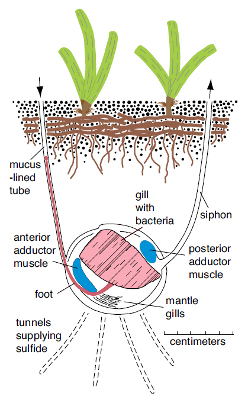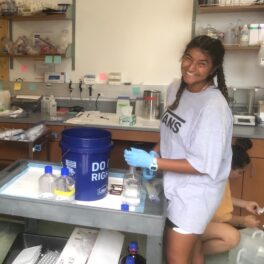Symbiotic survival
 This is a schematic cutaway view of the lucinid genus Codakia in a seagrass bed. Image courtesy of S.M. Stanley, Fig 2. Geology.
This is a schematic cutaway view of the lucinid genus Codakia in a seagrass bed. Image courtesy of S.M. Stanley, Fig 2. Geology.One of the most diverse families in the ocean today—marine bivalve mollusks known as Lucinidae (or lucinids)—originated more than 400 million years ago in the Silurian period, with adaptations and life habits like those of its modern members. Publishing in Geology, Geology & Geophysics (G&G) researcher Steven Stanley tracks the remarkable evolutionary expansion of the lucinids through significant symbiotic relationships. The Lucinidae remained at very low diversity until the rise of mangroves and seagrasses near the end of the Cretaceous. Especially important in their diversification was the lucinids’ development of a symbiotic relationship with seagrasses where they took advantage of the oxygen-poor, sulfide-rich sediments below roots and rhizomes.
Read more about it at PhysOrg.




